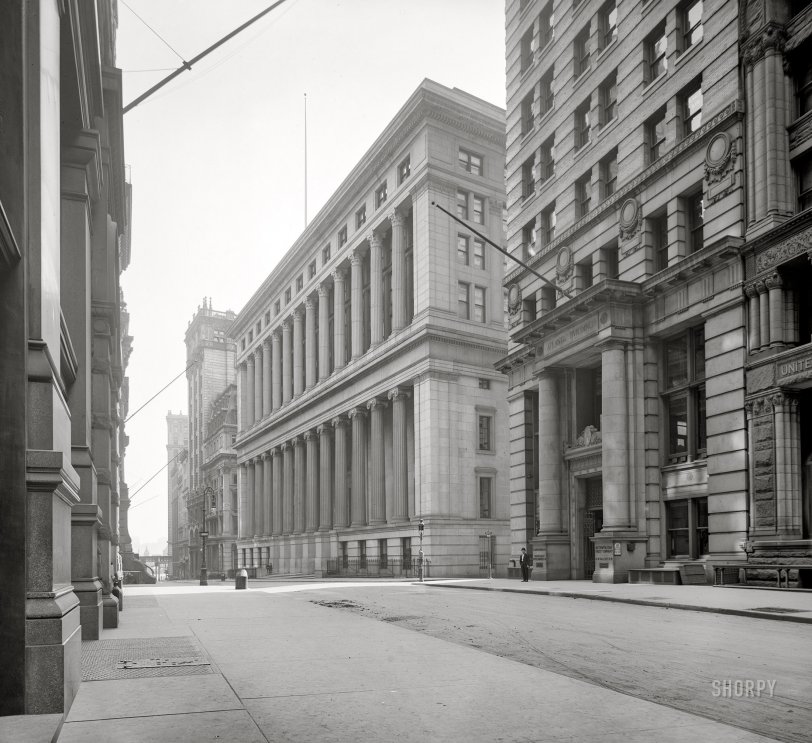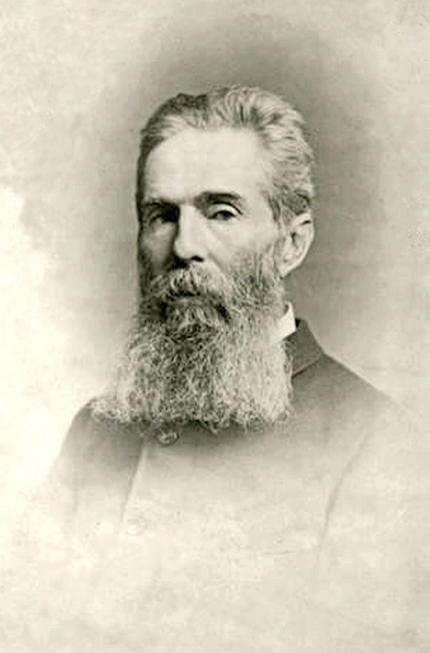


Framed or unframed, desk size to sofa size, printed by us in Arizona and Alabama since 2007. Explore now.
Shorpy is funded by you. Patreon contributors get an ad-free experience.
Learn more.

- Lofty addition
- In 1912
- Keenan Building
- Six years old
- Taken from the P.J. McArdle Roadway?
- It stood only 47 years
- Three track mind
- Incline to the right
- Reach for the sky, 1912 style
- No clean sweep
- Same Job Title, Same Face
- Sadly Lost
- Beautiful ...
- Where you get your kicks
- Aim High
- Pueblo Revival sisters
- Pueblo Neoclassicism
- Milk Man
- Regional dialect.
- Spielberg's inspiration
- Great Photo
- Loaf Story
- Do you still have the Rakes category?
- Could almost be a scene from the 1957 movie 'Hell Drivers'
- The Wages of Fear.
- Conspicuous by their absence
- Got Milk?
- All that aluminum
- No lefties
- Smoke 'em if you've got 'em
Print Emporium
National City Bank: 1912

New York circa 1912. "National City Bank, Wall Street at William Street." Also the Atlantic Building, and a sliver of U.S. Trust. Detroit Publishing Company glass negative. View full size.
Melville's neighborhood
Herman Melville worked as a customs inspector in New York from 1866 to 1885. His work was around the wharves, and inspectors had to rent their own work space nearby. But he would have been in and out of this Custom House over two decades.
Melville was paid four dollars a day for a six-day work week. He never received a promotion or a raise in pay.

One piece
The Bank building with its formidable pillars began life as the Merchants Exchange building. Those pillars came down the Hudson River -- and are one piece of stone -- no joints.
[There are joints in the upper columns. - Dave]
The Merchants' Exchange
This building has an extraordinary architectural history. It was built in 1836-1841 as the Merchants' Exchange, designed by architect Isaiah Rogers from Boston. The original building consisted of only the lower three stories, with the Ionic colonnade, and a big dome in the center of the block. As such, it was clearly modeled after Karl Friedrich Schinkel's Altes Museum in Berlin, built 1822-1828. From 1862 on it served as the US Custom House, which had been housed in what is now called the Federal Hall National Memorial (aka the Subtreasury) at Wall Street and Nassau Street. When the Custom House moved out to occupy Cass Gilbert's Beaux-Arts extravaganza facing Bowling Green, the National City Bank bought the building and hired McKim, Mead and White to expand it (1907-1910). Charles F. McKim decided to double the building in height by adding four more stories with a Corinthian colonnade on top of the original Ionic structure, while creating an entirely new interior with an impressive domed banking hall at the center. He integrated his addition so well that you would hardly suspect it was ever added in the first place!
110 years later
It's a scarier world on Wall Street; here and look to your right.
Piggy-back
... if not "piggy bank". They don't build 'em like this anymore (actually, they didn't even build 'em like this then: the upper floors were a later addition.)
From U.S. Custom House > Bank HQ > Luxury Hotel > Condos: all while its cousins in other cities were consigned to the landfill in their youth ... some buildings have all the luck !!
























On Shorpy:
Today’s Top 5